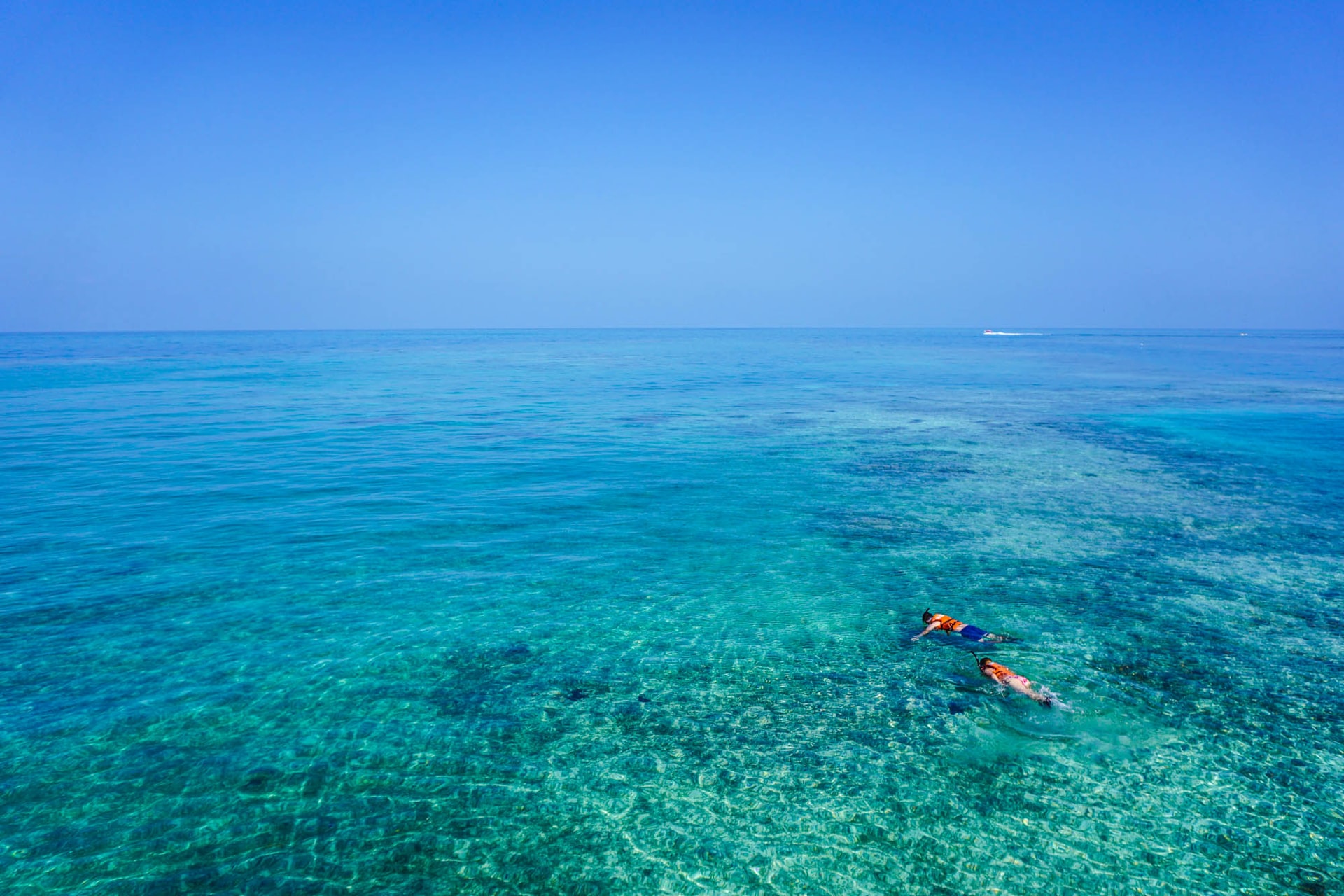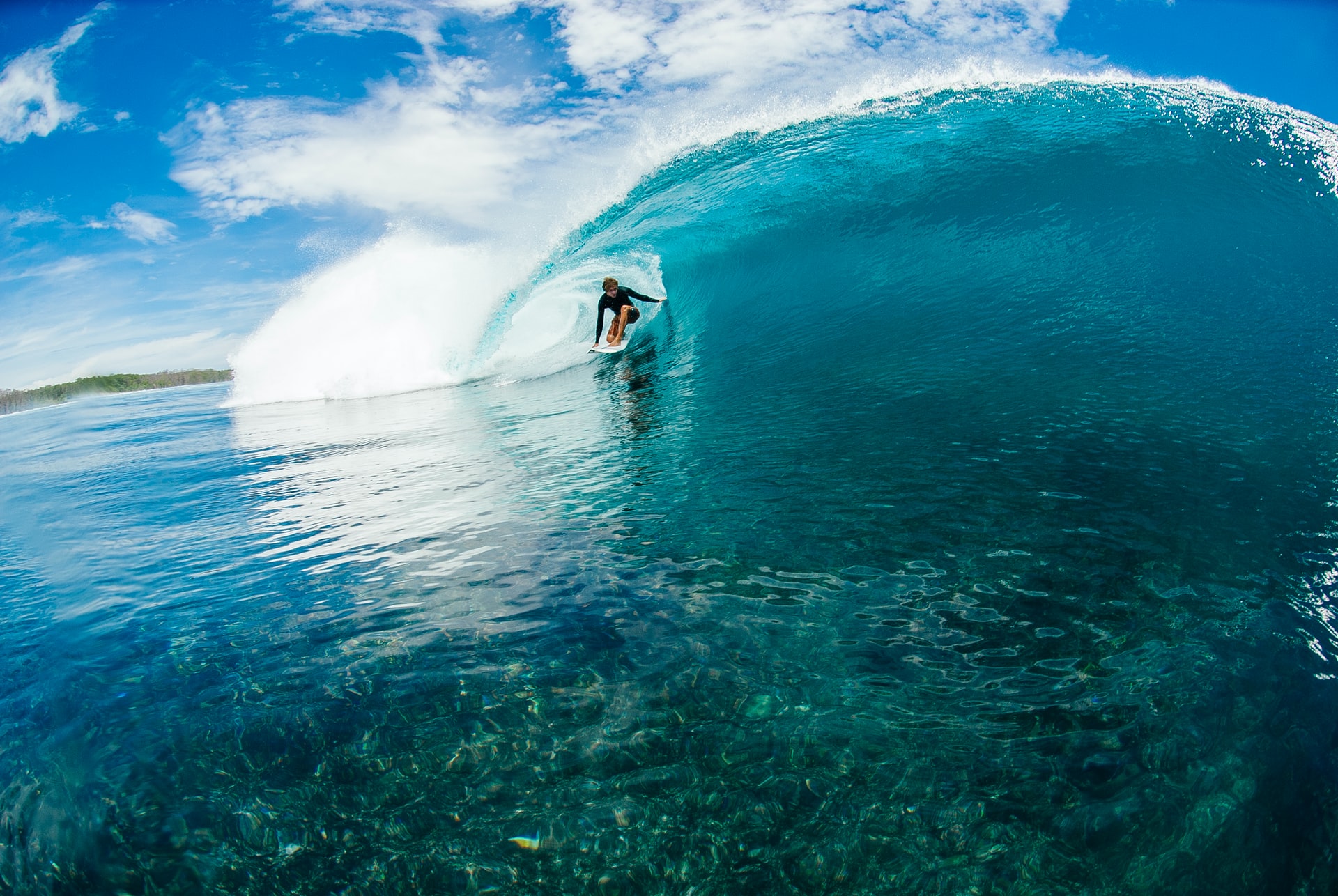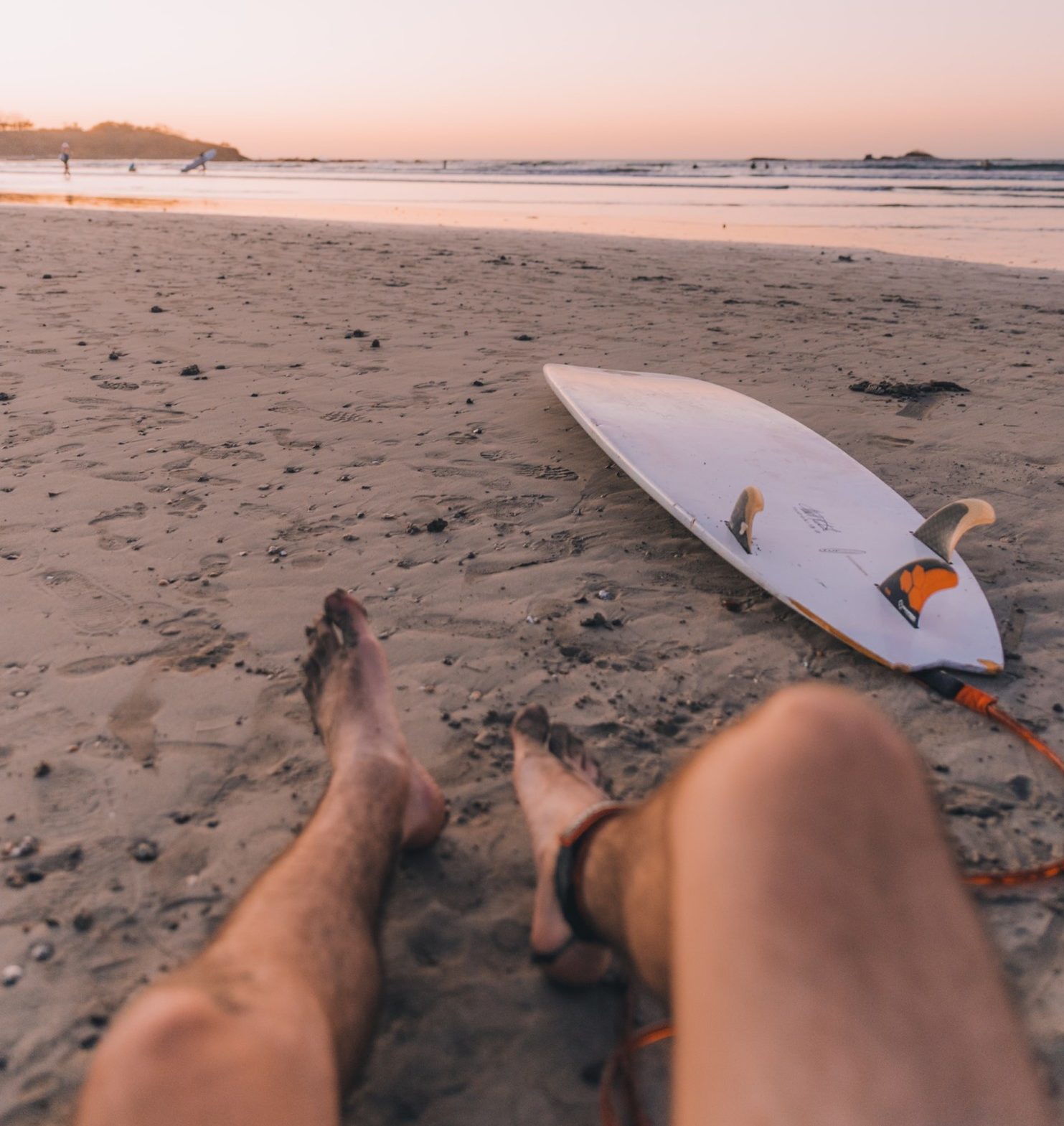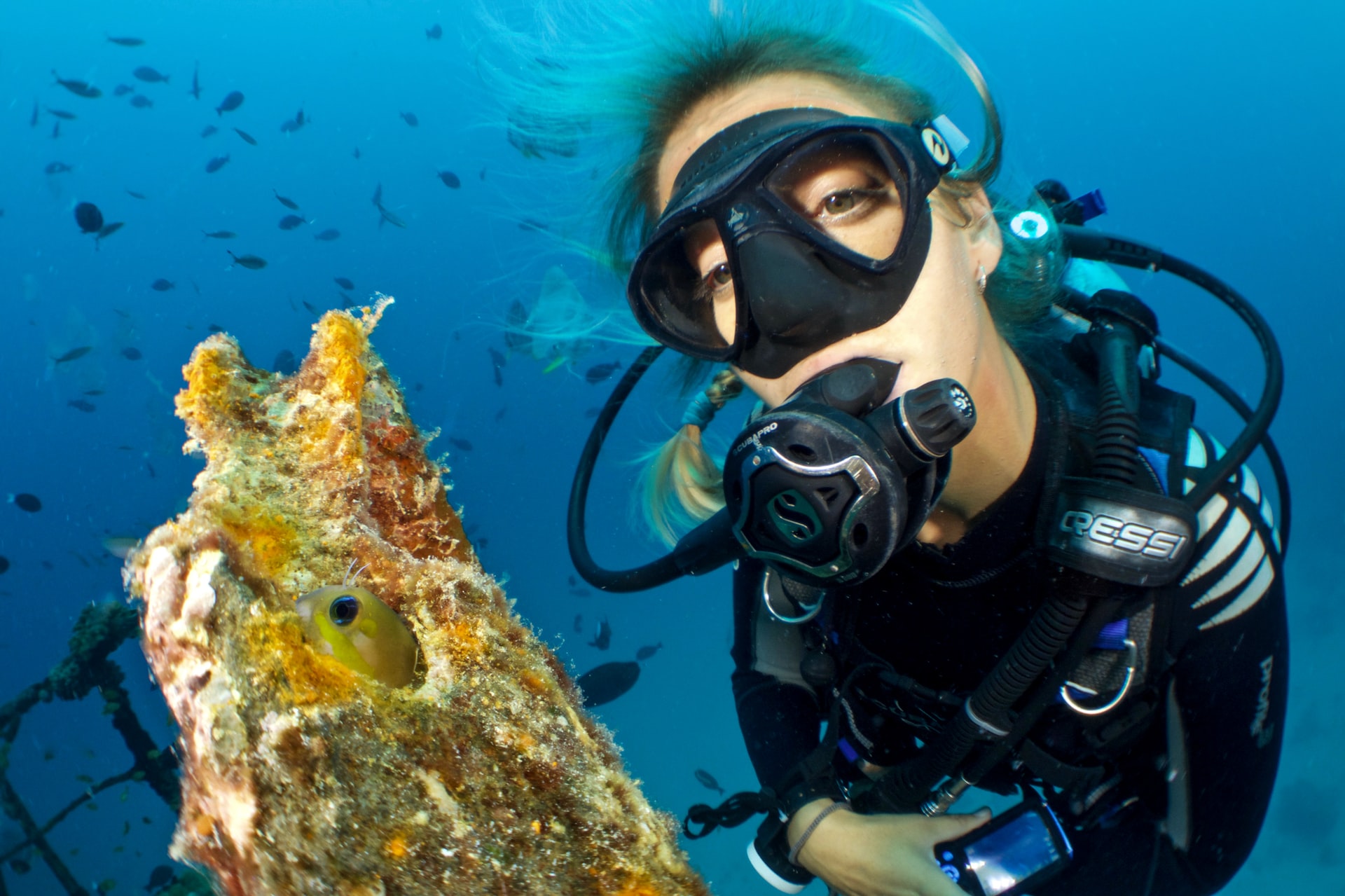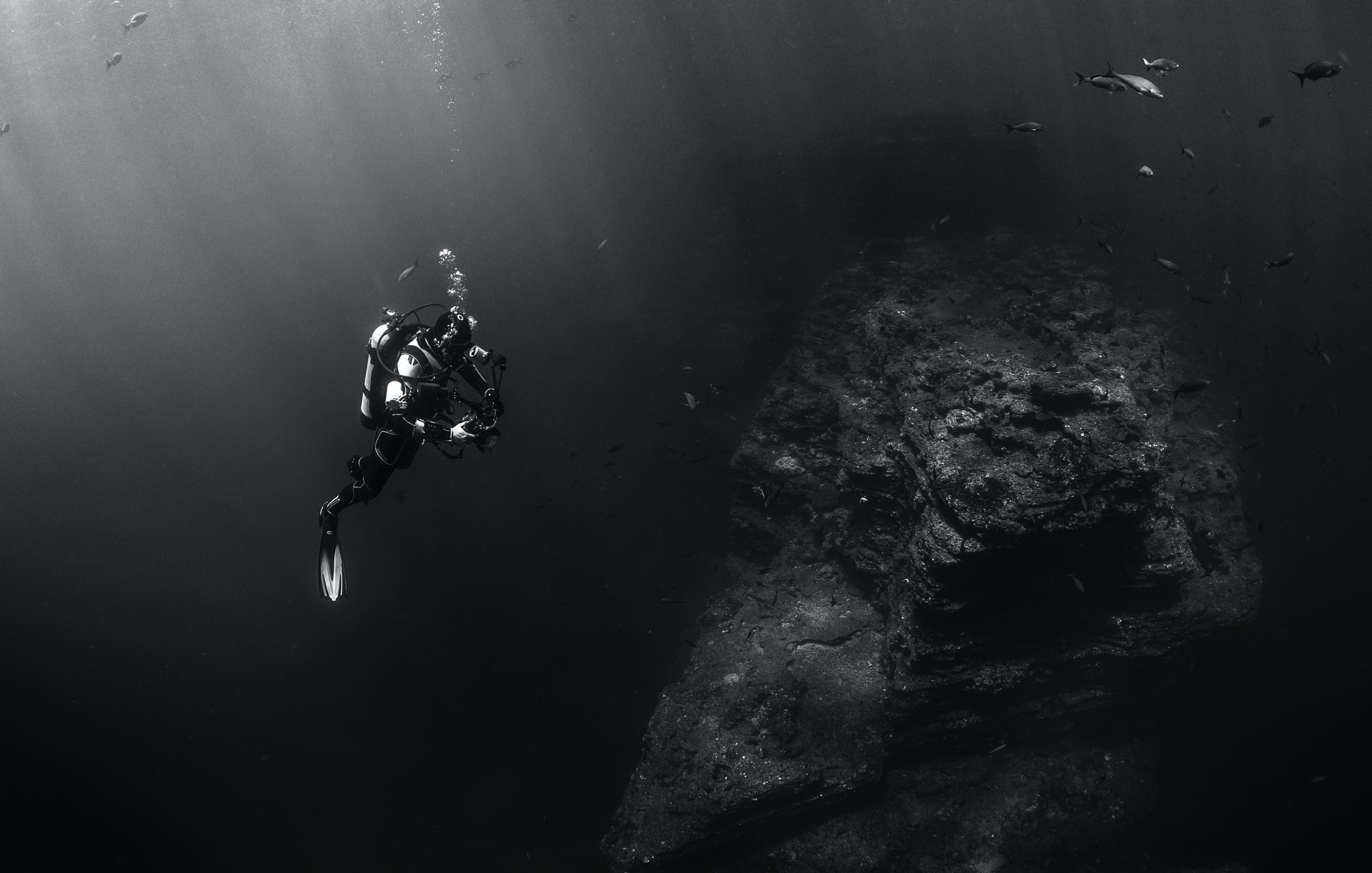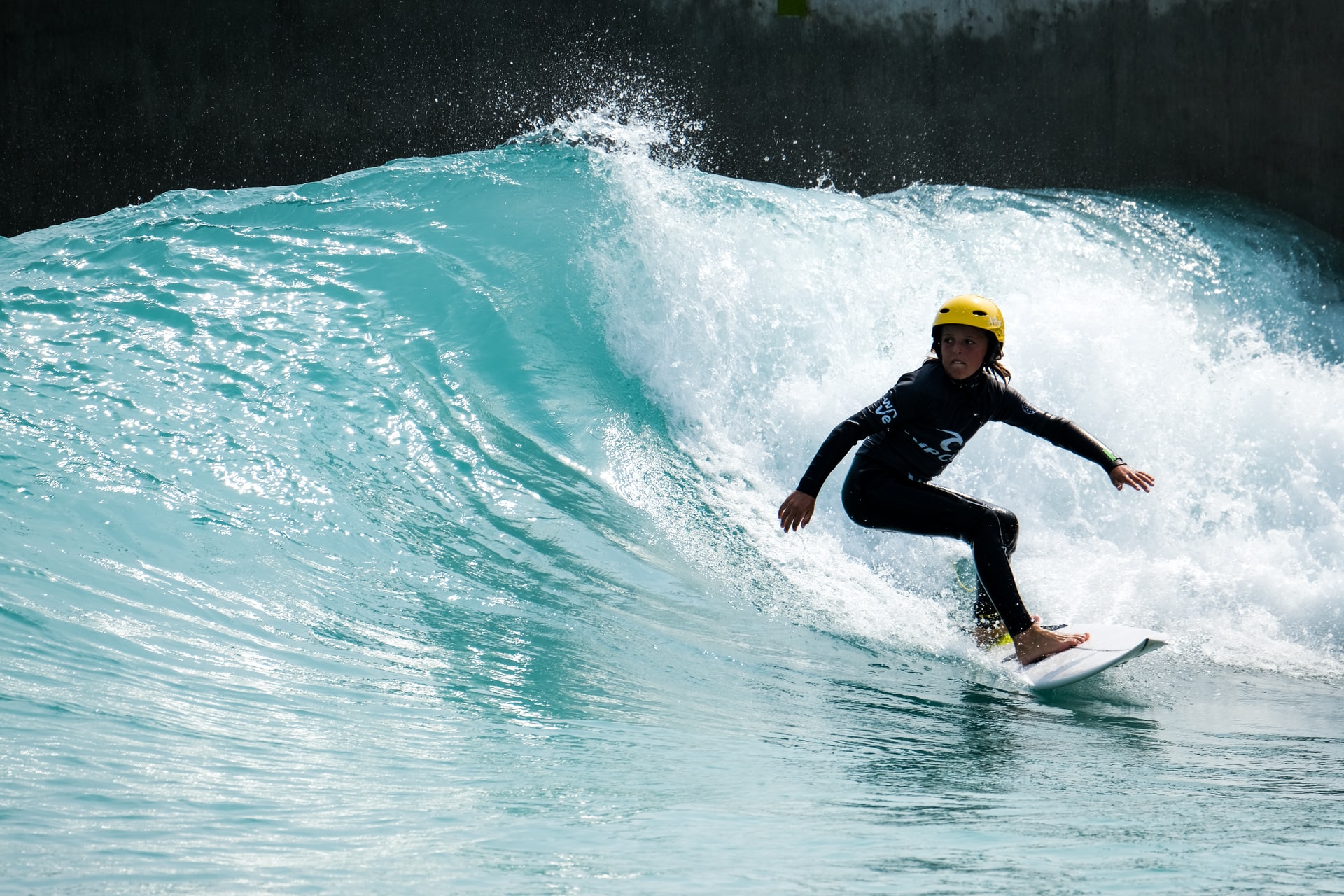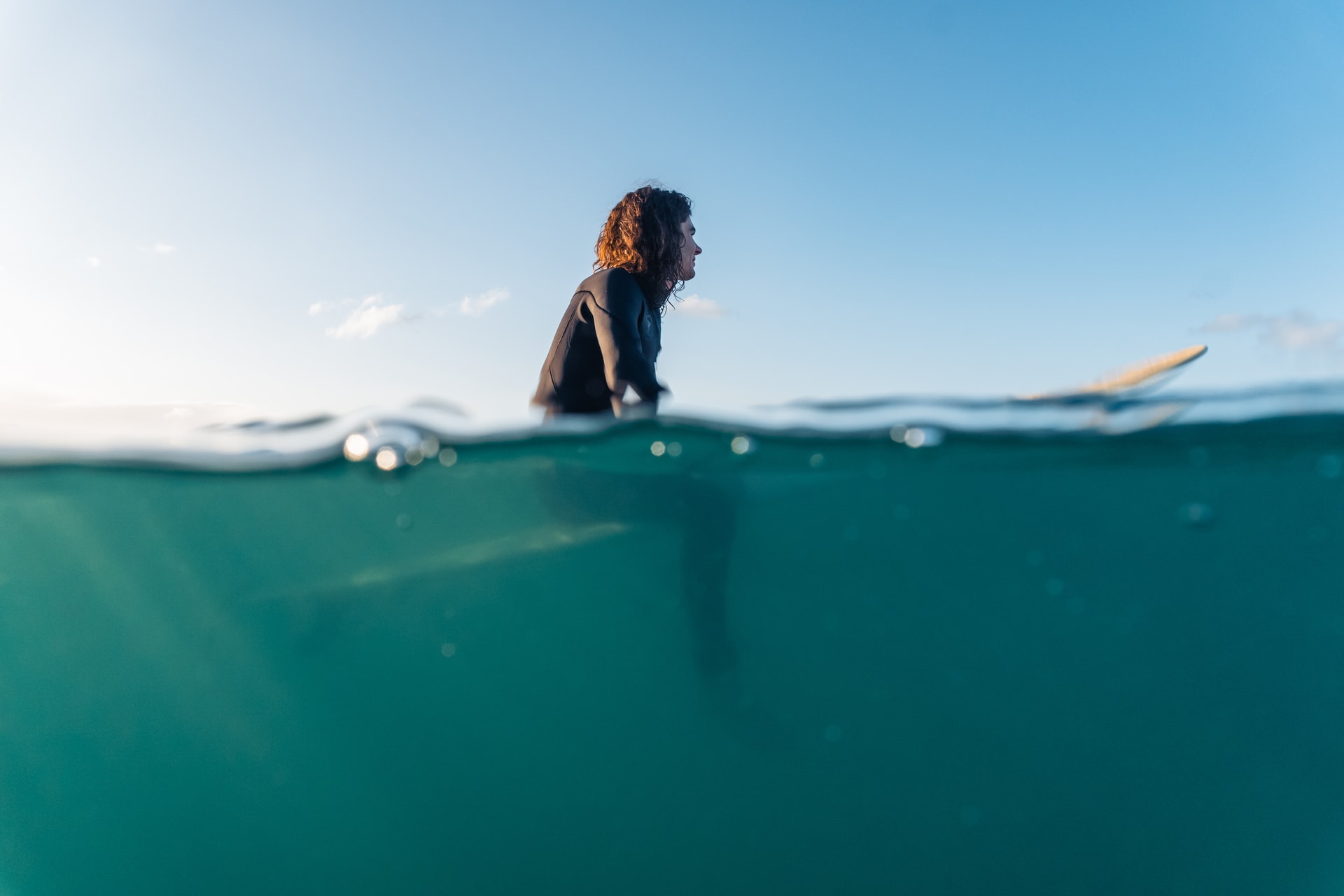As the most extensive coral reef system globally, Australia’s Great Barrier Reef is, as you might expect, one of the most popular destinations anywhere for snorkeling.
If you’re visiting the area and like nature and the water, a snorkel trip should be at the top of your to-do list.
However, you might have a few reservations about how safe it is.
We’re going to show you that snorkeling at the Great Barrier Reef is as safe as can be.
Diving into Australia’s most famous seas presents no more real danger than snorkeling anywhere else so long as you act sensibly.
In fact, due to the highly developed and regulated industry, you’ll see that the Great Barrier Reef is probably one of the safest places to snorkel anywhere.
So let’s take a look and help decide if snorkeling here is for you.
- Is Snorkeling the Great Barrier Reef Dangerous?
- What Exactly Are the Dangers of the Great Barrier Reef?
- Is the Great Barrier Reef More Dangerous Than Other Destinations?
- Are Certain Areas of the Great Barrier Reef Safer Than Others?
- Should I Be Worried About Sharks When Snorkeling in Australia?
- How Do I Avoid Dangerous Jellyfish?
- 9 Tips to Snorkel Safely in the Great Barrier Reef
- 1. Pick a Location Suitable for your Experience Level
- 2. Be Honest About Your Confidence and Experience
- 3. Follow Instructions and Rules
- 4. Plan for Sea Sickness
- 5. Don’t Touch
- 6. Choose a Responsible Operator
- 7. Be Jellyfish and Crocodile Aware
- 8. Don’t Consume Alcohol and Snorkel
- 9. Watch Out for the Sun
- Conclusion
- You Might Also Like…
Disclosure: this post contains affiliate links (clearly marked with ), which means we may earn a commission if you buy something through them, at no additional cost to you.
Is Snorkeling the Great Barrier Reef Dangerous?
The straightforward answer is no, snorkeling at the Great Barrier Reef is not dangerous.
But before we talk about that, let’s look at a few facts about the scale of the reef.
The Great Barrier Reef comprises approximately 3,000 reefs and 600 islands and is rightly one of the best-known ocean vacation destinations in the world.
Listed as a UNESCO World Heritage Site, the reef stretches along the Queensland coast of northeast Australia for more than 1,430 miles / 2,300 kilometers.
By way of size comparison for its vast size, the reef covers a similar area to that of Japan, Italy, or Germany.
Famously, the reef is so large that it’s one of only a few living organisms visible from space and is considered a must-visit for lovers of nature.
The water temperature is enjoyable year-round, and the underwater landscape and wildlife are of a quality that’s hard to beat.
Approximately two million people visit the Barrier Reef each year, and the most popular activity by far is snorkeling.
Your safety depends mainly on how you act while you’re snorkeling and not putting yourself into situations unsuitable for your experience or condition.
In this way, we can consider snorkeling the Great Barrier Reef to be safe.
No matter where you are, being in the water has risks attached to it, but by using common sense and by following local rules and advice from your tour guides, you can ensure your safety here as much as anywhere.
The snorkel industry operating at the Great Barrier Reef is highly developed, professional, and well-regulated, meaning safety is the number one priority above all else.
Amongst others, the Great Barrier Reef Marine Park Authority and the Australian Underwater Federation work to constantly monitor and develop safe practices on the reef.
What Exactly Are the Dangers of the Great Barrier Reef?
Snorkeling the Great Barrier Reef presents the same basic dangers from snorkeling as anywhere else.
While the most significant risk when participating in any watersport is drowning, this is thankfully rare and can, in the vast majority of cases, be avoided by acting sensibly and not going beyond your limits of experience and personal condition.
Hazardous marine life injuries, such as lionfish stings, are avoided by keeping a respectful distance and not harassing wildlife or breaking interaction rules like feeding fish.
In common with other tropical seas, there are seasonal risks from stinging animals like jellyfish, and we’ll look at how those are managed below.
Additionally, concerns about injury from larger animals like sharks are, in reality, an extremely rare event and not cause for concern, again so long as correct behaviors are followed.
Crocodiles are spotted occasionally on beaches or reefs, so make sure that you pay attention to the seasonally changing local information and pay attention to guide instructions.
Because the industry is well developed and controlled, the Great Barrier Reef is considered one of the safest places to snorkel in the world.
Boat crews and snorkel guides are well-trained and experienced, and local rescue services are among some of the world’s best.
Although the Great Barrier Reef is enormous, tourism is concentrated in about 7 percent of the total Great Barrier Reef Marine Park with around 86 percent of tourism visiting waters adjacent to Cairns, Port Douglas, and the Whitsundays.
So while many of the very best snorkeling sites do involve a reasonable boat journey, you don’t need to be concerned that you’ll be entirely out of the reach of help on the wild ocean.
Because it covers such a massive and diverse area, the Great Barrier Reef has perfect areas for beginners and experienced snorkelers.
The area shares the common risks found elsewhere when participating in any watersport or being in the fierce sun for too long.
Staying safe when snorkeling is mainly down to being cautious and not getting yourself into a dangerous situation.
The reef is full of life with beautiful marine animals and plants, and snorkeling can be regarded as a safe activity and the experience of a lifetime.
While it’s normal to have some anxiety about snorkeling if you’re not very experienced, you can follow our safety tips below to make sure that you have a fun and safe time.
Is the Great Barrier Reef More Dangerous Than Other Destinations?
The Barrier Reef is at least as safe to snorkel as any comparable location worldwide.
Research suggests that accidents and fatalities related to snorkeling on the Great Barrier Reef are actually significantly lower than other popular global locations.
The Great Barrier Reef Marine Park Authority monitors and controls activities to make sure that standards are maintained.
Of course, this does rely on visitors doing their part by following the rules, acting responsibly, and only going with authorized operators.
Are Certain Areas of the Great Barrier Reef Safer Than Others?
There are several options available to you to start snorkeling at the Great Barrier Reef.
Depending on your experience, some could be safer for you than others.
If you’re a beginner, you will do well to start in the more sheltered waters found from the beaches.
Beach snorkeling allows you to ease yourself in and find your comfort level by choosing the water depth you’re comfortable with.
Recommended areas with spectacular reefs accessible from beaches include Lady Elliot Island, Fitzroy Island, and Pumpkin Island.
Companies offer guided snorkeling lessons at many of these locations, and these are highly recommended if you don’t have a lot of experience.
To reach the off-shore locations a boat trip is needed, and these come in two types.
Trips to permanently moored solid pontoons are an excellent option for those with little experience.
They often provide other activities like underwater viewing galleries, mini-submarines, and helmet diving.
As a day trip, these are great for groups or families of varied experience as they offer something for everyone, even those that aren’t going to snorkel.
For the snorkelers, these pontoons provide large, marked-off safe snorkel areas with lifeguards on watch.
It is standard in the Great Barrier Reef for companies not to take anyone snorkeling if they can’t swim to a basic level, and it’s always advised to use a flotation device like a snorkel vest to have buoyancy if needed.
More experienced snorkelers will enjoy the dedicated catamaran boat tours that can take them to the most spectacular reefs.
In general, these are for more experienced visitors as the water conditions can be more challenging.
By choosing a trip that’s suitable for you and by being honest with the operator about your experience level so they can help as appropriate, you’ll find something that is both enjoyable and safe.
Should I Be Worried About Sharks When Snorkeling in Australia?
There are sharks in the waters of the Great Barrier Reef, and for many snorkelers and scuba divers, the chance to see them is one of the reasons for visiting.
Practically there is no need to worry about them, and while scuba divers can see them, the chance of seeing one while snorkeling is relatively low.
Sharks are typically found in the deeper waters rather than on top of the reefs where you will be snorkeling, so sightings aren’t common.
In general, sharks will tend to stay away from around the main snorkeling areas due to the activity levels there that they are put off by.
If a shark is sighted, the moment people start paying attention, it will most likely quickly swim away.
Additionally, common shark species like white and blacktip reef sharks, leopard sharks, or wobbegongs are not regarded as dangerous unless you try to touch, feed or otherwise mistreat them.
The designated snorkel areas are controlled carefully to ensure that no one engages in any practices that might attract sharks, so there isn’t any realistic reason to be concerned when snorkeling on an organized trip.
How Do I Avoid Dangerous Jellyfish?
In common with other tropical locations, the waters of the Great Barrier Reef do experience seasonal visits of various stinging animals, including jellyfish.
During what is called “Stinger Season,” stinger nets are put in place to protect beaches, and operators of snorkeling trips will enforce the wearing of full-body stinger suits to protect guests.
Generally, the stinger season is between November and May, although it will vary each year, so make sure you check the local information when you visit.
In addition to tiny stinging animals that can cause mild tingling or painful sensations, there are two types of jellyfish at this time of year.
Irukandji Jellyfish are very small and can be hard to spot with the naked eye.
They are rare but can cause painful stings and, in extreme cases, can be deadly.
The Box Jellyfish is considerably larger and are mostly found close to shore, where the stinger nets are designed to keep them away from swimming and snorkeling areas.
Both these or similar species of jellyfish are also found in popular destinations in South East Asia.
Luckily for visitors to the Great Barrier Reef, education, awareness, and prevention are considerably higher here than in less-resourced places.
So long as instructions from snorkel guides and boat crews are followed, combined with the mandatory wearing of stinger suits, snorkeling during stinger season can still be enjoyed.
An additional bonus of the full-body stinger suits is that less sunscreen is needed to protect you while snorkeling.
9 Tips to Snorkel Safely in the Great Barrier Reef
If you’re new to snorkeling, make sure that you take a look at our tips for beginners and, in addition, these tips for the Great Barrier Reef.
1. Pick a Location Suitable for your Experience Level
Beach locations are ideal for beginners, families, or simply those who don’t want to deal with crowds or a boat trip.
Boat trips to the fixed pontoon locations offer an excellent mix of great snorkeling with a controlled environment.
In contrast, the trips to the more remote reefs are best for experienced snorkelers who are stronger swimmers and don’t mind jumping off the boat’s dive platform.
2. Be Honest About Your Confidence and Experience
Make sure that you talk to the crew and guides about any concerns that you have.
Be aware that most organized trips on the Great Barrier Reef will not let you in the water if you can’t swim to a basic level.
Remember that being honest is the best way to ensure your safety, so if you do have any concerns or medical conditions, make sure that you bring them up.
Wear a snorkel vest or other buoyancy aid to help you keep comfortably afloat.
Don’t push yourself beyond your limits and if ever in doubt, stay close to the boat or exit point.
3. Follow Instructions and Rules
The crew and guides are there to keep you safe, so make sure that you follow instructions at all times.
Listen carefully to safety briefings and take note of emergency procedures.
For example, never break the environmental rules, like feeding fish, that can alter aquatic life’s normal behavior.
Make sure you pay attention at roll-calls, where the crew will check carefully that everyone is back on board before leaving the site.
4. Plan for Sea Sickness
A typical boat trip might involve a journey of up to an hour and a half to reach the snorkel site.
If you do suffer from seasickness, make sure that you plan to take suitable medication before setting off so that your trip isn’t spoiled.
5. Don’t Touch
Remember that sensible snorkelers don’t touch anything in the water.
Stings from corals are unfortunately common, and as well as a nasty injury, a snorkeler can also cause significant damage to the delicate organisms.
Teasing or harassing aquatic life is the most likely cause of an injury, so make sure that you don’t get too close or try to touch even the most peaceful-looking life.
6. Choose a Responsible Operator
Ensure that the operator you choose is correctly licensed and insured and part of the High Standard Tourism scheme.
Eco-accreditation schemes additionally allow you to choose an operator that is particularly environmentally responsible.
7. Be Jellyfish and Crocodile Aware
Remember that during Stinger Season, you’ll need to wear a stinger suit and follow the current advice.
Crocodiles can be found at the beach and on reef locations, so be aware at all times, follow crew instructions and local information, and give any seen a respectful distance.
8. Don’t Consume Alcohol and Snorkel
It’s common for vacationers to want a drink, but you should never consume alcohol before entering the water.
Alcohol can impair sensible judgment and is the cause of many water accidents.
Additionally, staying correctly hydrated helps keep you feeling well in the sun and reduces the likelihood of cramps.
9. Watch Out for the Sun
Wear suitably protecting UV-blocking clothing, and remember that reef-friendly sunscreen should be applied and allowed to dry before entering the water.
Protect any areas of your skin that won’t be covered as the reef sun is especially strong.
It’s widespread for snorkelers to get burnt between their hairline and mask, so pay attention to even the most minor areas.
Conclusion
Hopefully, we’ve convinced you that snorkeling at the Great Barrier Reef is a worthwhile and safe activity that you should definitely try when you’re in North-Eastern Australia.
Follow the rules, be sensible, stick to your limits, and you’ll have a wonderful experience in this world-class aquatic paradise.
You Might Also Like…
-
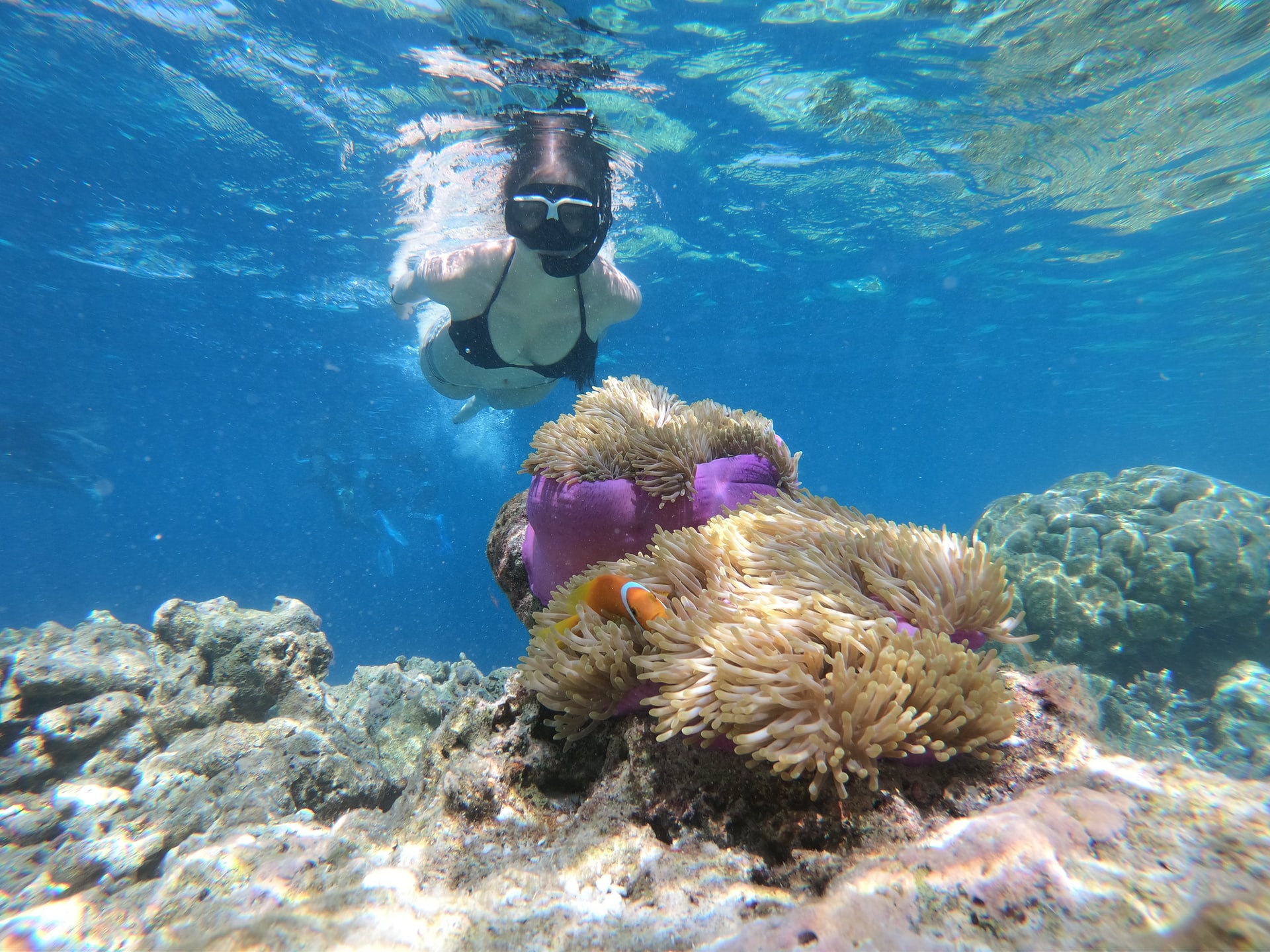
Can You Drown Snorkeling? 11 Common Reasons (+Helpful Tips)
-
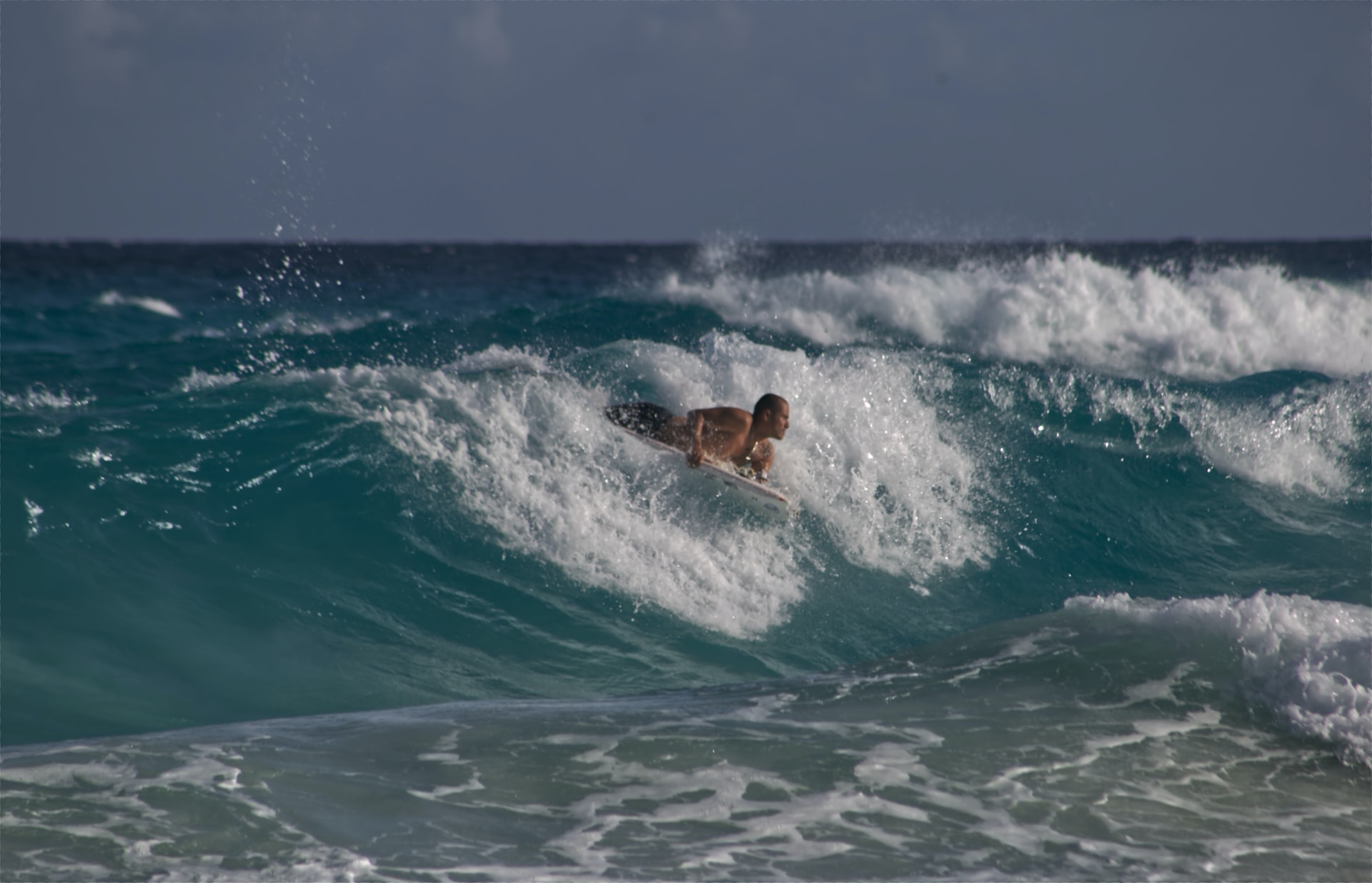
Can I Use Snorkeling Fins for Bodyboarding? Pros & Cons (+6 Tips)
-
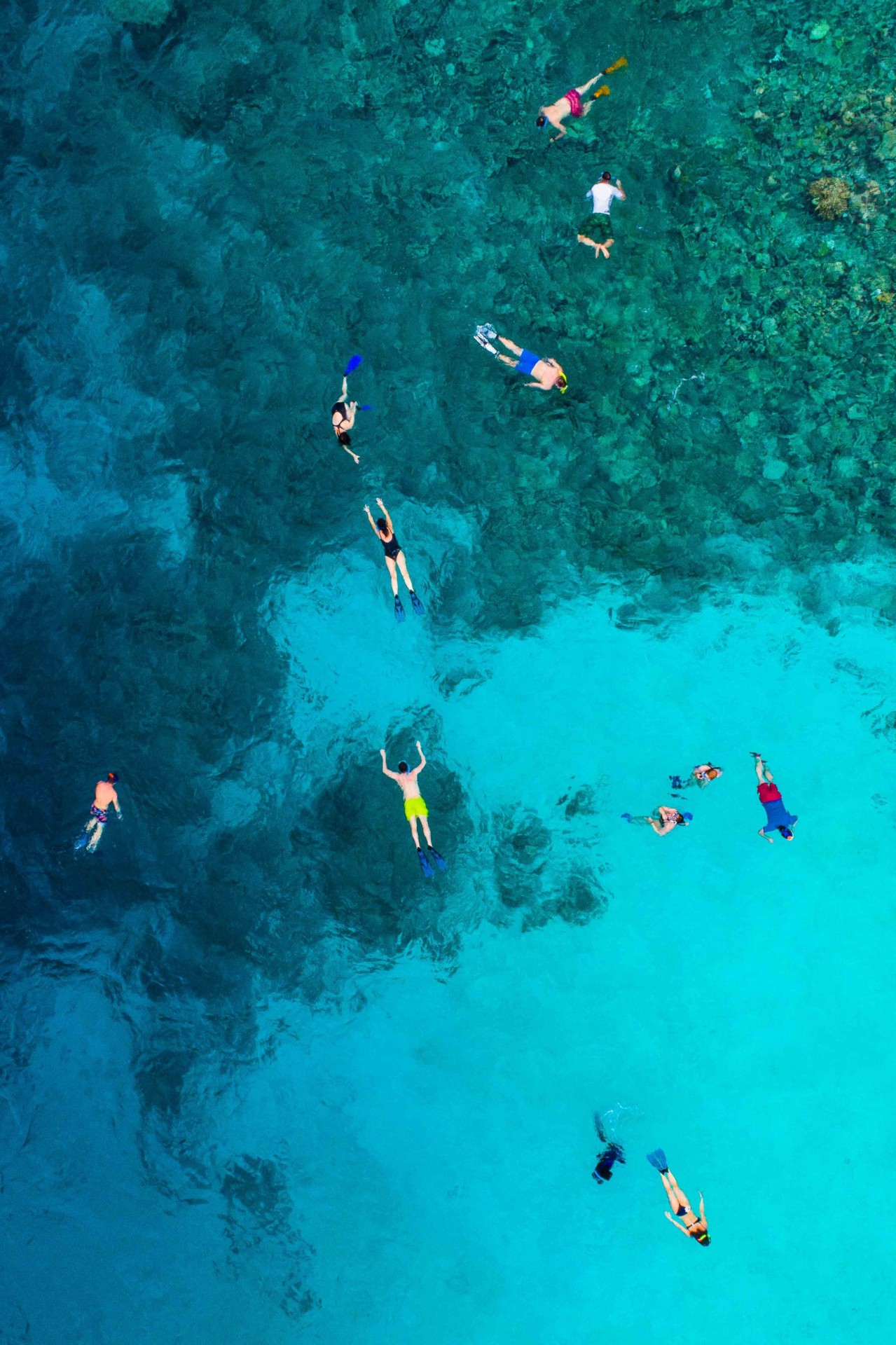
What Colors to Avoid When Snorkeling? (& Which You Should Wear)
-
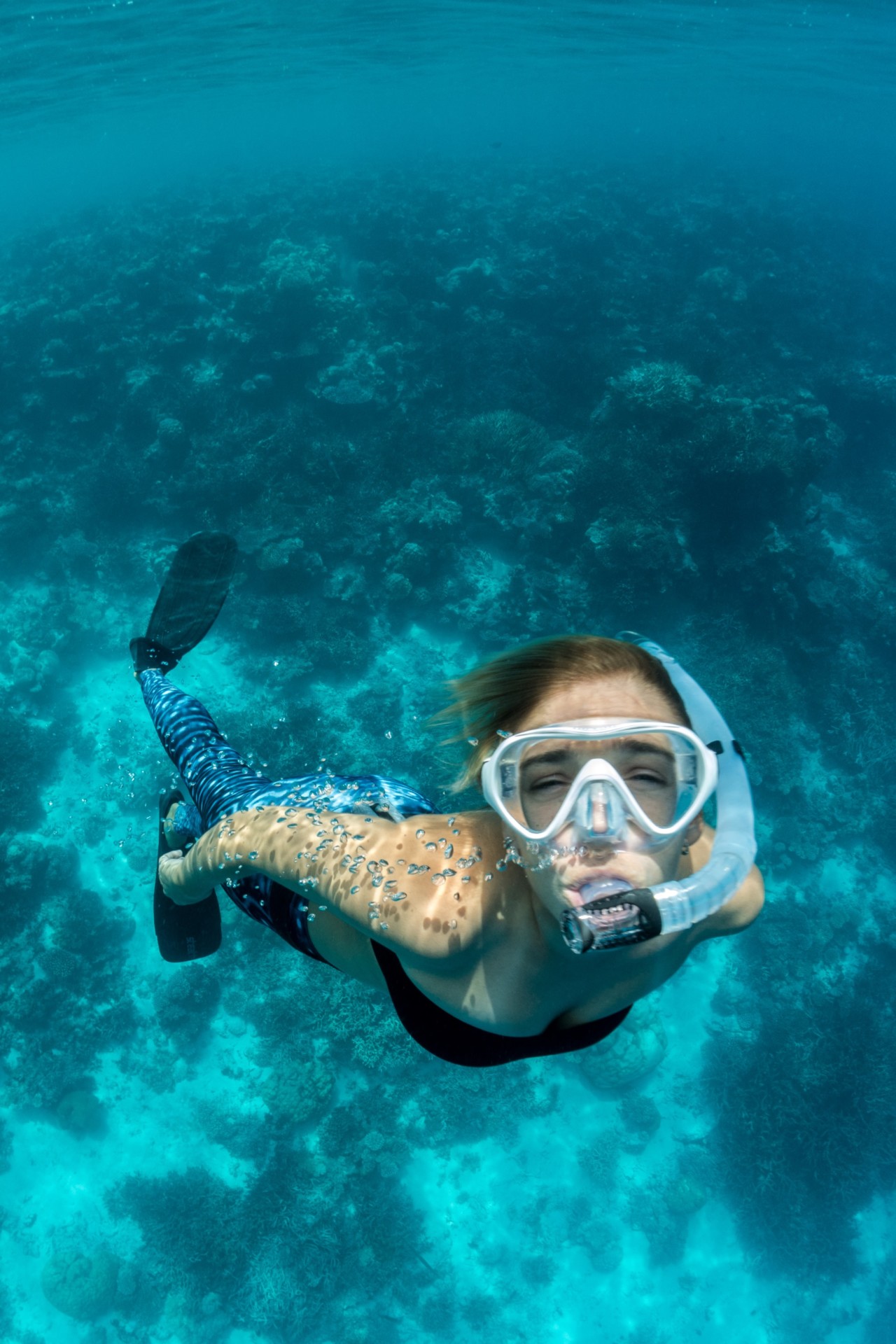
Is It Safe to Fly After Snorkeling? What You Should Know (+4 Tips)
-
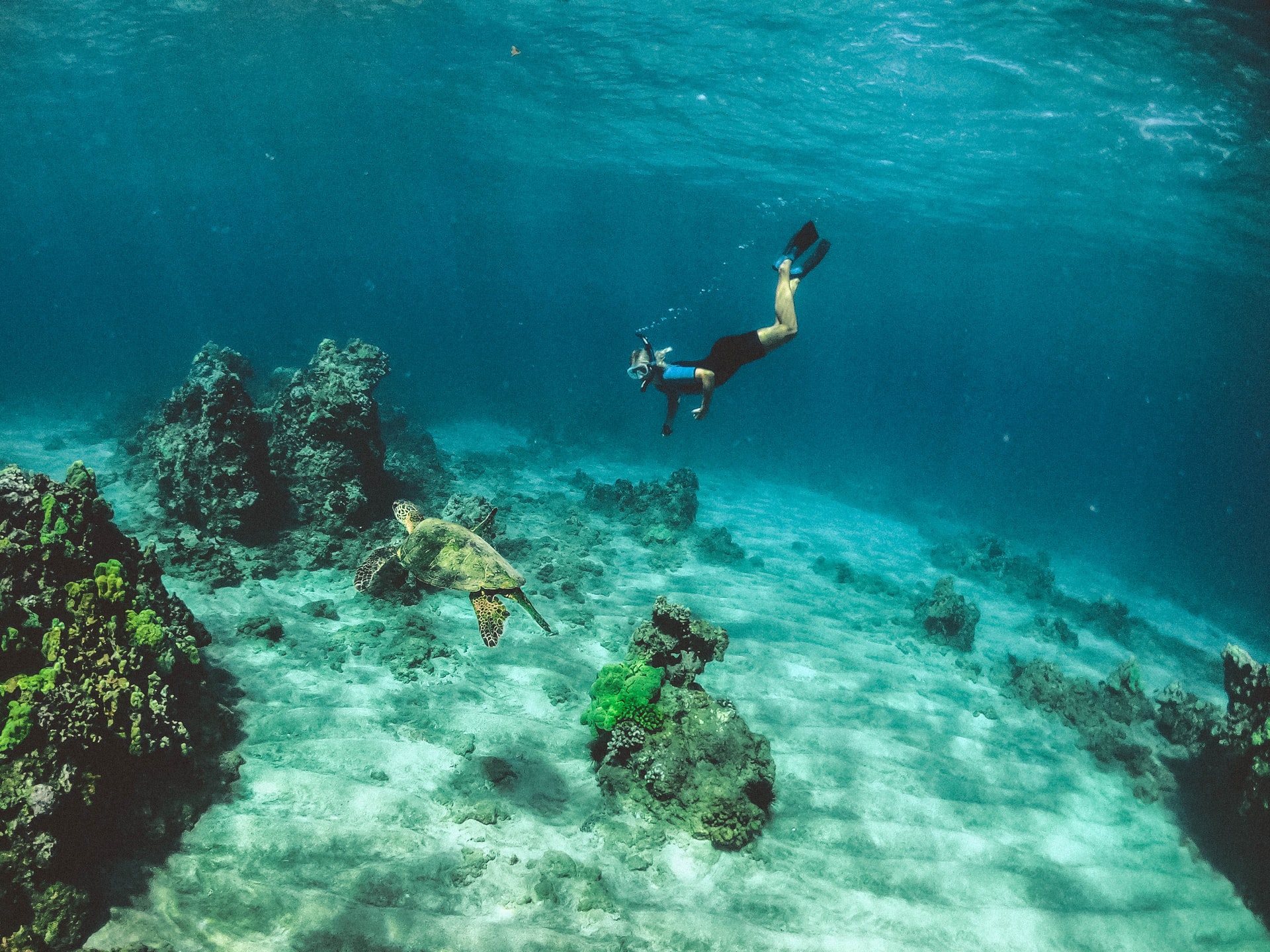
Can’t Hear After Snorkeling? 3 Possible Causes (& Solutions)
-
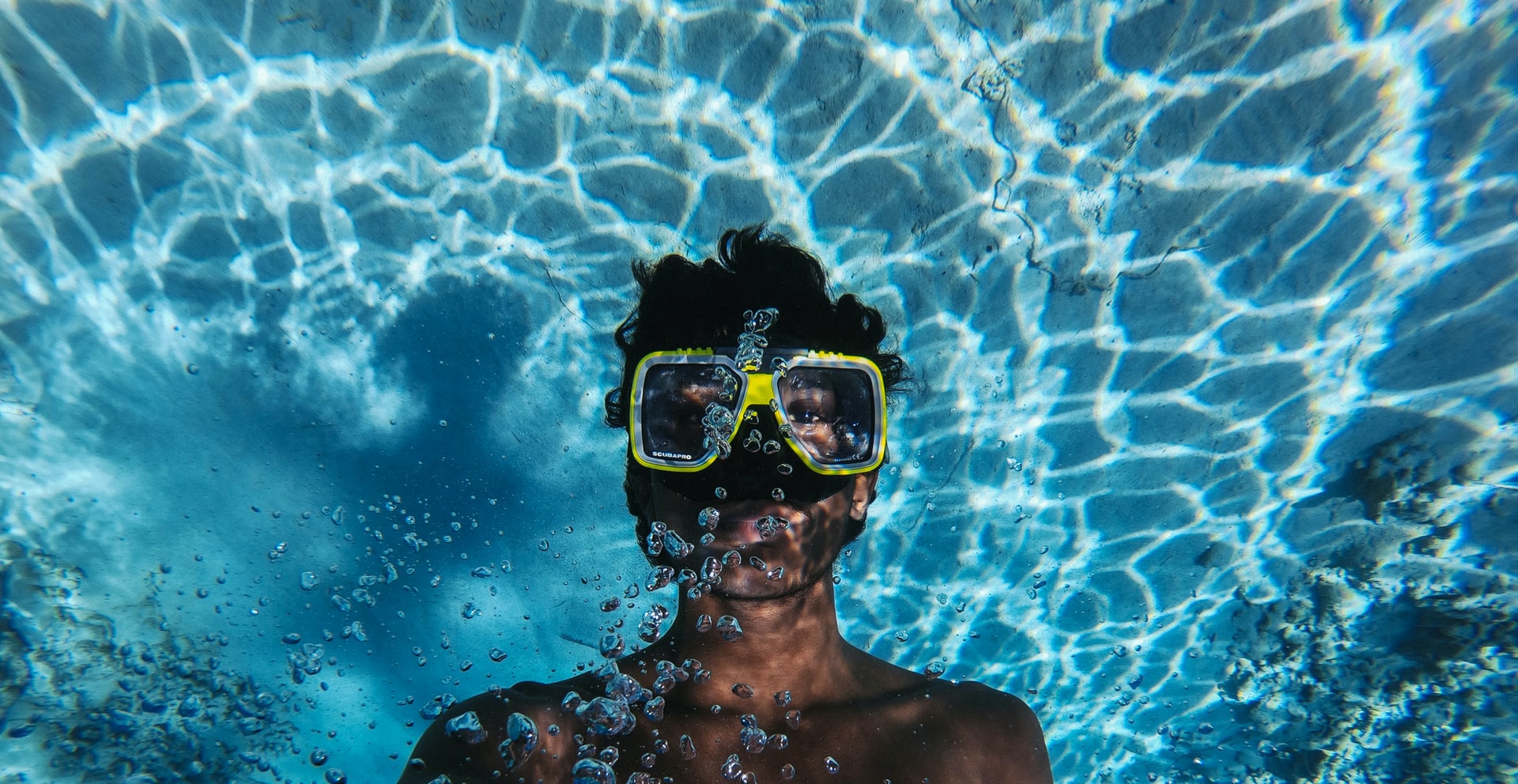
Can Snorkeling Cause a Sinus Infection? (+9 Tips to Avoid It)
-
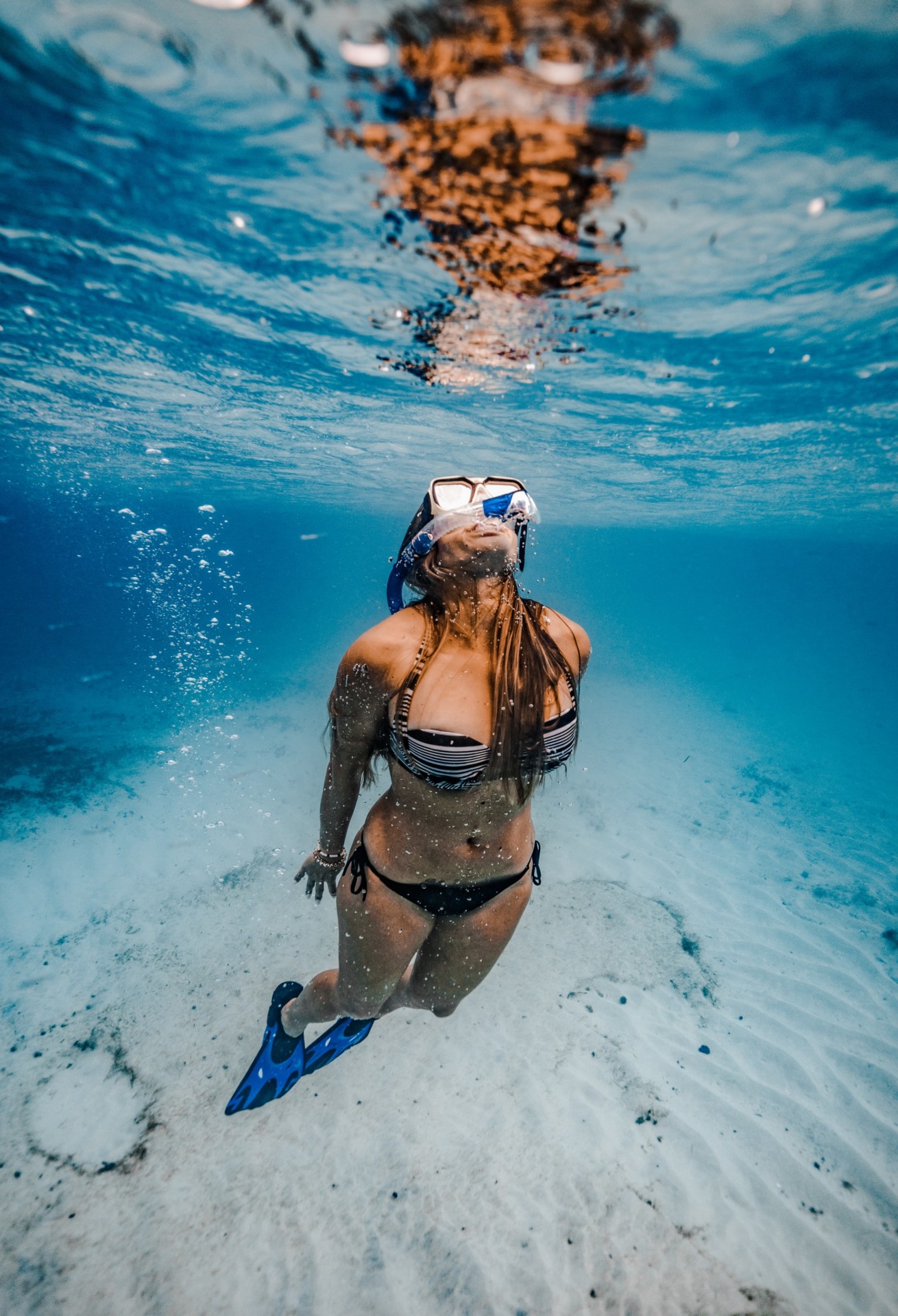
Can Snorkeling Cause a Sore Throat? 8 Common Causes (+Tips)
-
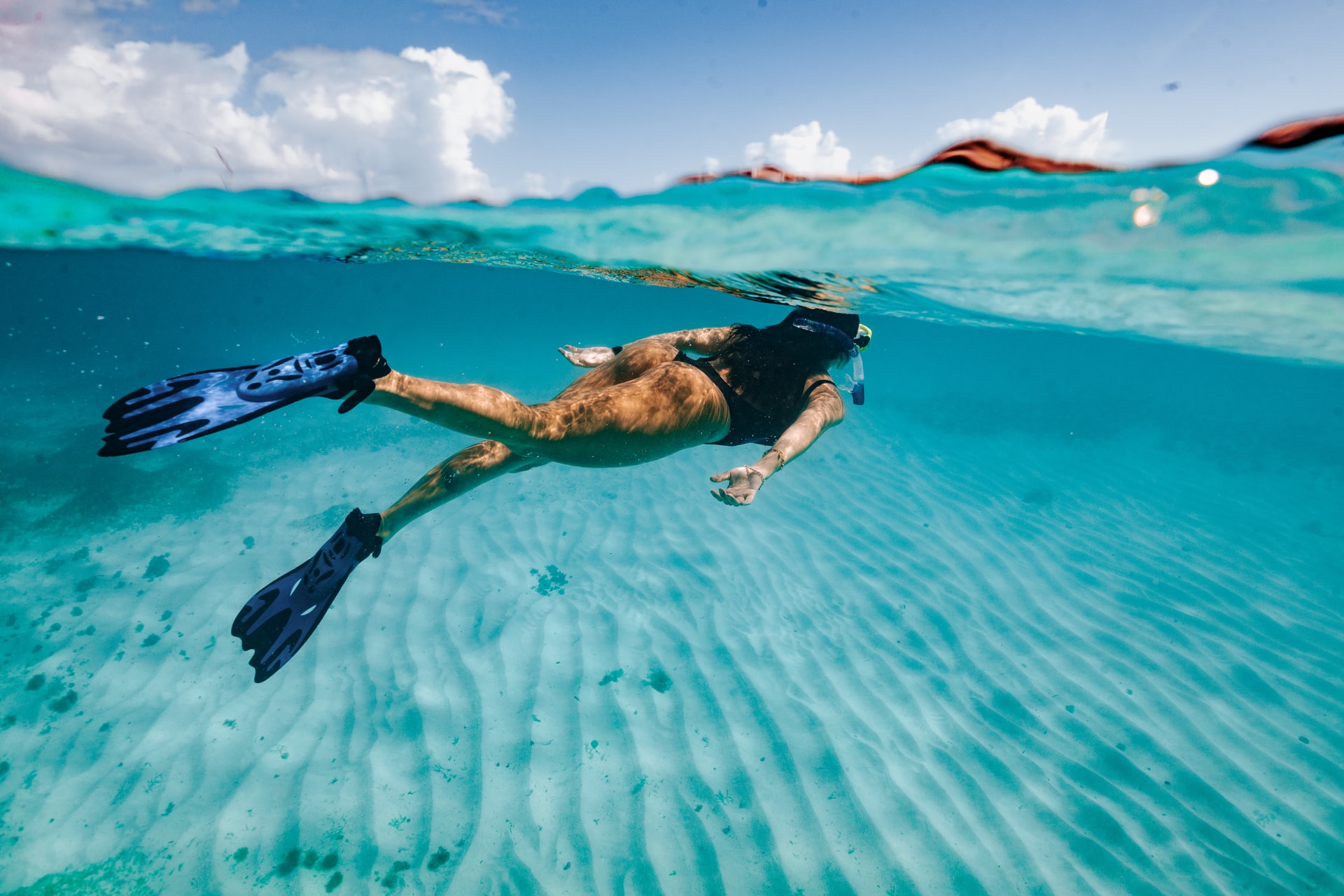
Can Snorkeling Cause Vertigo? (+8 Tips to Avoid It)
-
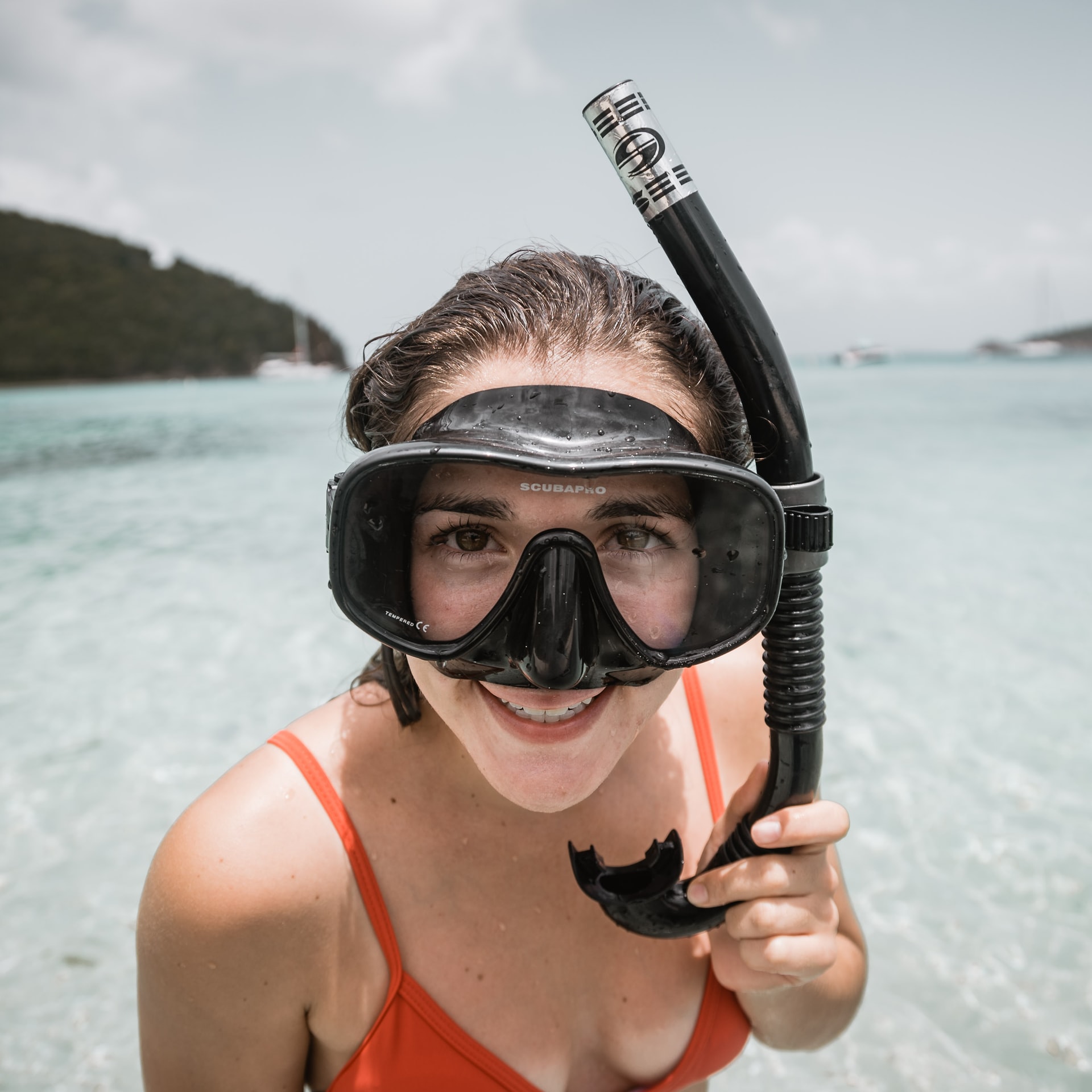
How Do Snorkel Masks Work? (+Regular Vs. Full-Face Masks)
-
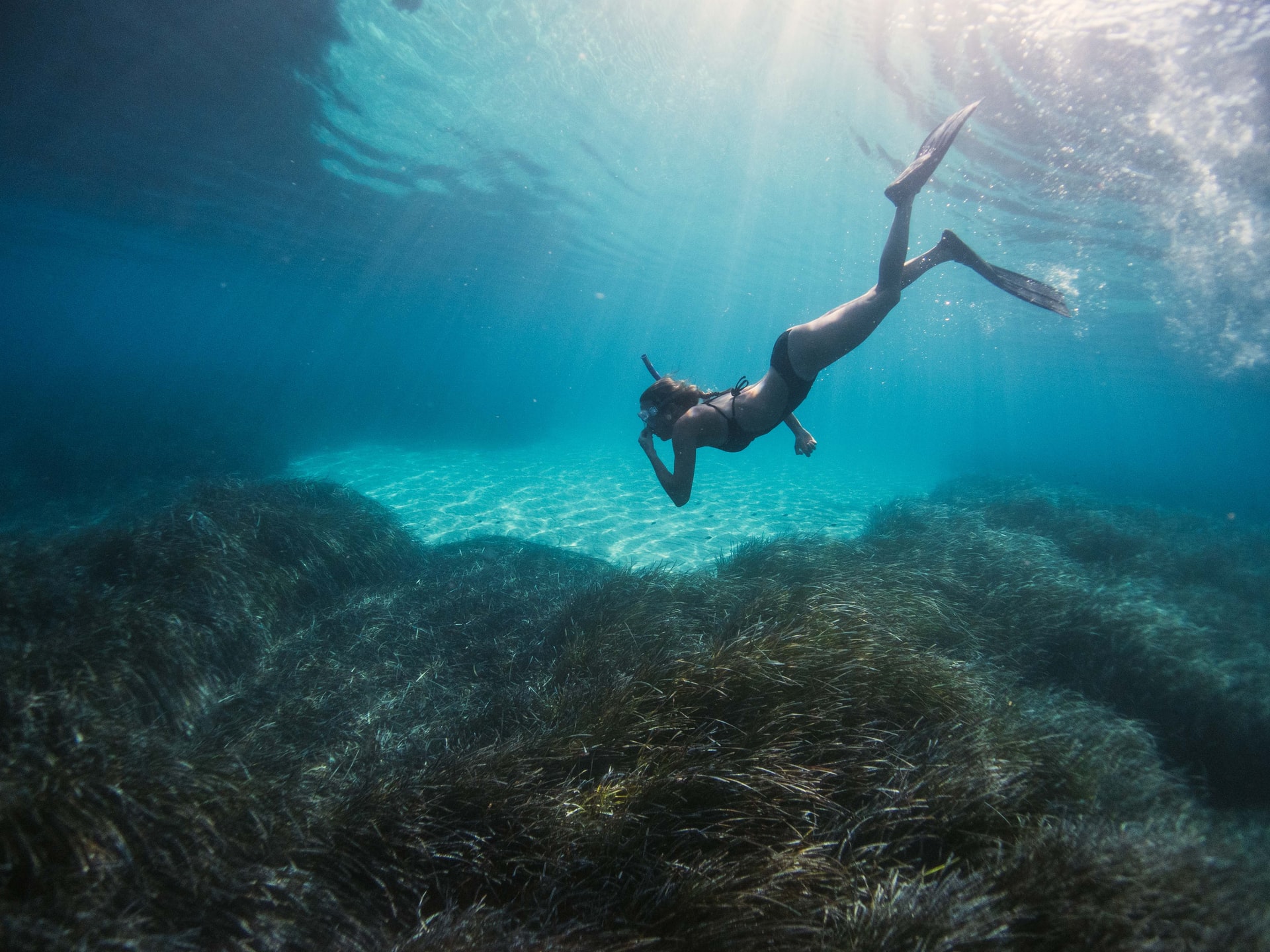
Why Does Snorkeling Make Me Nauseous? (11 Causes & Remedies)
-
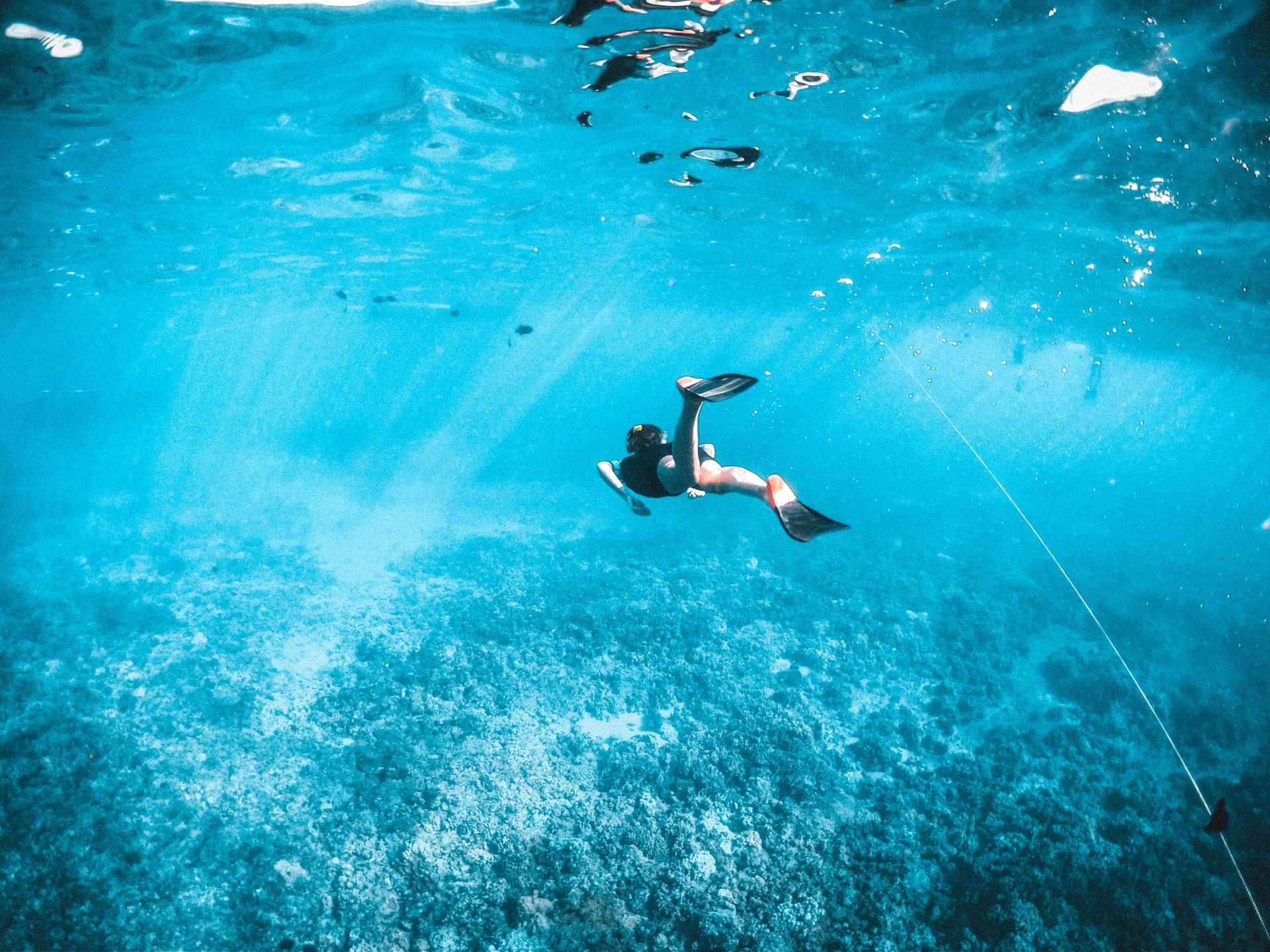
What Does Snorkeling Feel Like? FAQs Answered (for Beginners)
-
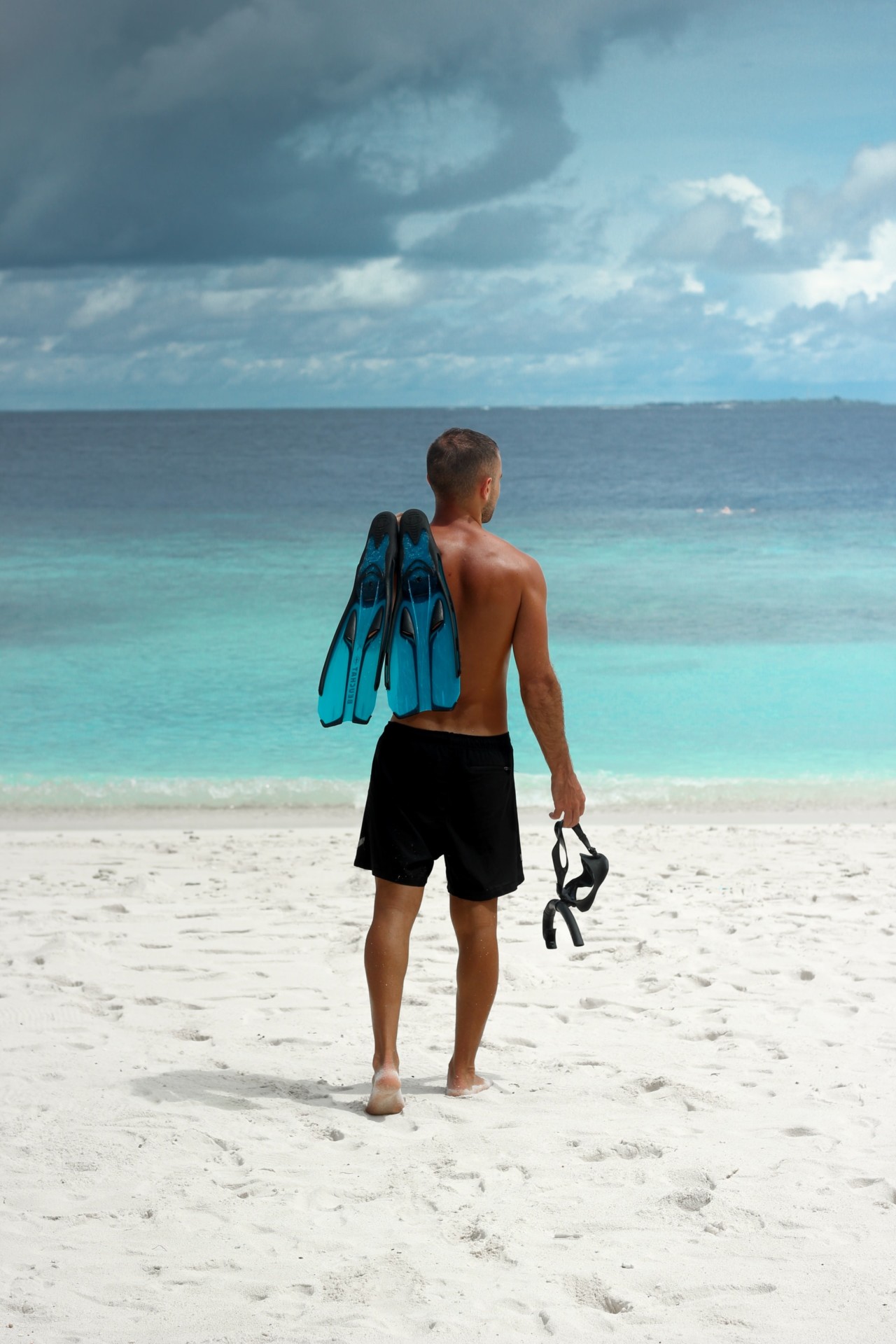
Does Rain Affect Snorkeling Visibility? 4 Ways It Does (+Helpful Tips)

